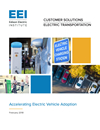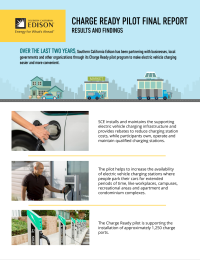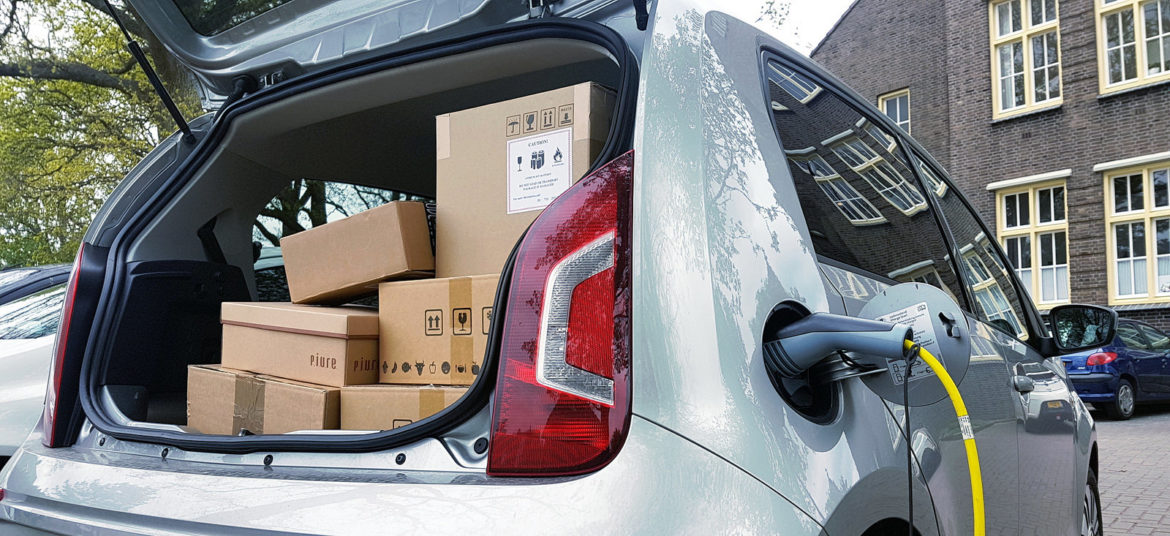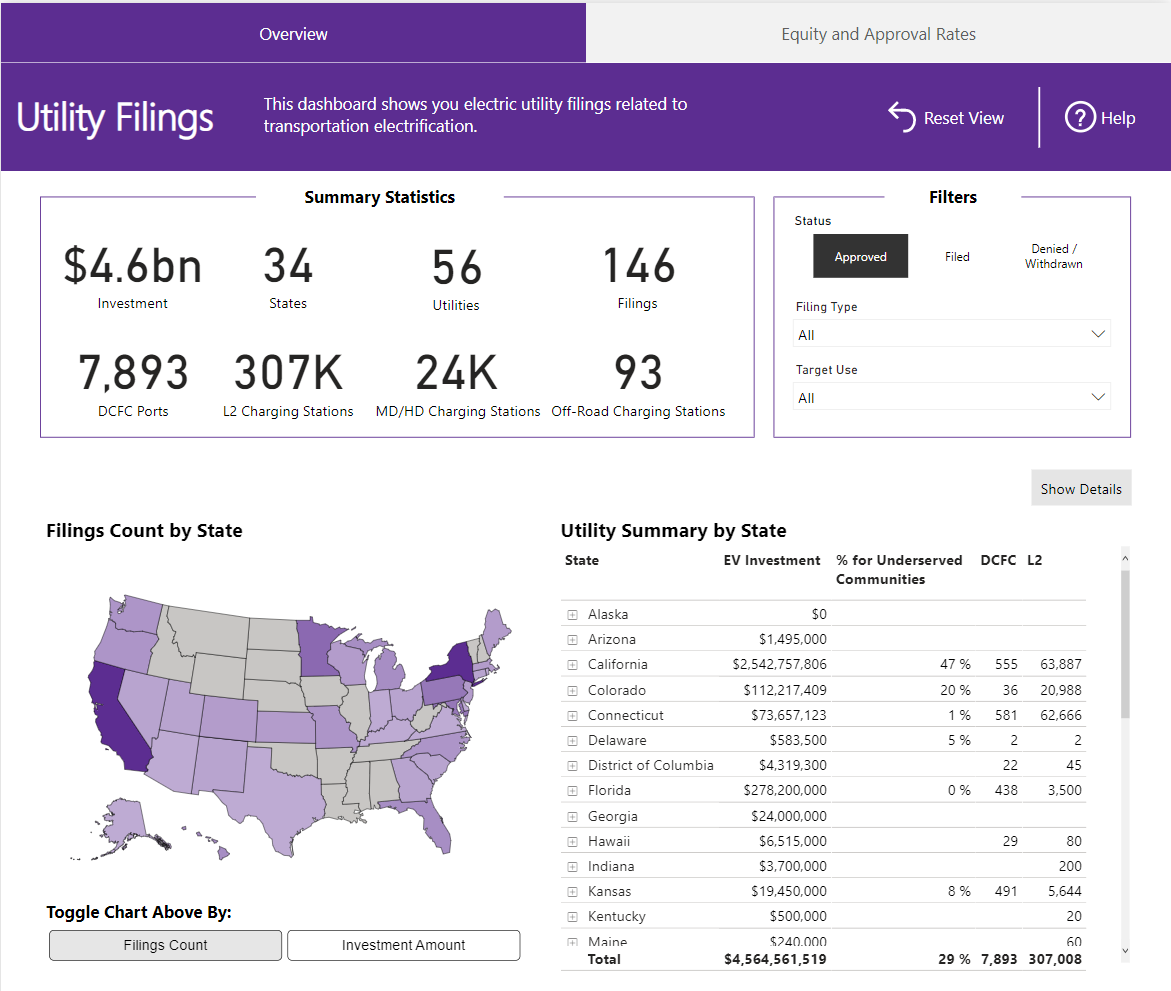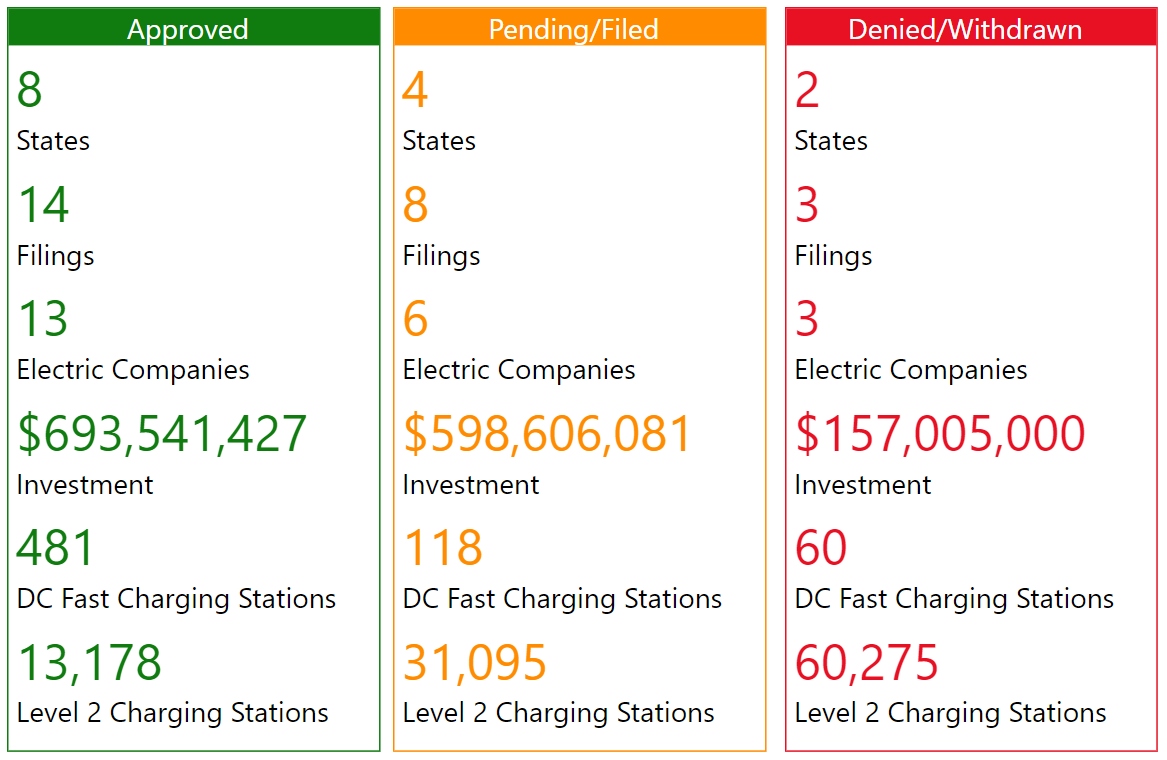Electric utilities have the opportunity to act as leaders in the effort to expand transportation electrification in underserved communities. These communities are an important focus for utilities because they often face disproportionate harm from transportation emissions and utilities as companies that serve the public are well positioned to ensure all segments of society benefit from transportation electrification. Following a comprehensive review of all utility programs related to transportation electrification tracked in the EV Hub Utility Filings Dashboard, we have found that nationwide, 36 out of the 101 program proposals include an equity goal in at least one element of the program.
While this is an encouraging figure, these programs only need one element proposing to invest all or a specific proportion of funding for underserved communities to be classified as containing an equity focus. Furthermore, stating underserved communities are a priority is not a guarantee an investment will occur and a closer look at these programs reveals that only approximately 25 percent of all approved investment in transportation electrification is directed to benefit underserved communities.
Investment prioritization is just one aspect of efforts to ensure the benefits of transportation electrification reach underserved communities and specific data on the level of utility engagement in transportation equity has been difficult to come by. Using the Greenlining Institute’s Mobility Equity Framework as a guide, we recently upgraded the way we track equity-related elements in electric utility filings on EV Hub. For the purposes of this effort, a program is considered equitable if it aims to ensure that underserved communities benefit from a program as opposed to only pursuing an economically efficient outcome. Greenlining’s framework puts communities first and provides a roadmap for transportation planning that focuses on empowering these communities.
We can now track specific equity elements within larger programs and pull out information on how each utility is designing their programs to align with the goals of the Mobility Equity Framework. We’re now tracking equity goals, requirements to invest a certain amount of funds in underserved communities, labor requirements, public reporting requirements, and engagement with underserved communities. Because various utilities outline equity goals in different ways and state commissions including the California Public Utilities Commission have developed specific targets for engaging disadvantaged communities, the Utility Filings Dashboard uses the term underserved communities to capture more general utility efforts across the country.
Our new data reveal that more than $977 million of approved utility programs include some prioritization of underserved communities. These programs could support up to 26,280 Level 2 charging stations and 560 DC fast charging stations. While this shows significant utility engagement in underserved communities, more than 90 percent of this investment is concentrated in California. In addition, out of the total approved investments, only $345 million is allocated directly to underserved communities.
Some elements within California utility programs and Portland General Electric’s investments are expected to be allocated entirely to underserved communities while most other programs allocate a specific percentage of funds. Of particular note is Pacific Gas and Electric’s recently approved Empower Electric Vehicle Charger Incentive and Education Program which designated the entire $4 million budget to charging station rebates and educational campaigns directly targeting underserved communities. Other than Southern California Edison’s Fleet Ready program, which designates 40 percent of the total infrastructure expenses to underserved communities, other utility programs are expected to invest between 10 and 30 percent of funds in underserved communities. Table 1 estimates potential and dedicated investment totals for underserved communities in each approved program based on information available in each program through September 2019.
Approved Utility Programs Including a Transportation Equity Element Through September 2019
|
Utility |
State |
Potential Investment |
Dedicated Investment |
|
Southern California Edison |
California |
$377 M |
$166 M |
|
Pacific Gas and Electric |
California |
$358 M |
$87 M |
|
San Diego Gas and Electric |
California |
$158 M |
$81 M |
|
Eversource |
Massachusetts |
$45 M |
$4.5 M |
|
AEP Ohio |
Ohio |
$10 M |
$1 M |
|
Duke Energy |
Florida |
$7.6 M |
$0.8 M |
|
Pacific Power |
Oregon |
$4.6 M |
$0 M |
|
Ameren Missouri |
Missouri |
$4.4 M |
$0.4 M |
|
National Grid |
Massachusetts |
$4.3 M |
$0.2 M |
|
Portland General Electric |
Oregon |
$2.6 M |
$2.6 M |
|
Liberty Utilities |
California |
$1.6 M |
$0 M |
|
Potomac Edison |
Maryland |
$1.5 M |
$0.5 M |
|
All Other Utilities |
Delaware, Pennsylvania, Washington |
$2.7 M |
$0.8 M |
|
Total |
|
$977 M |
$345 M |
This table outlines potential utility investment in transportation equity through September 2019. California leads with more than 90 percent of approved investment in this category. The dedicated investment was estimated based on information from individual utility filing documents, which is roughly 36 percent of the total potential funding.
Source: EV Hub Utility Filing Dashboard
As is the case with approved investments, California utilities claim the vast majority of the $812 million in pending investments which include an equity-related focus. A pending program from Southern California Edison seeking to provide charging infrastructure for residential and multi-unit dwellings accounts for almost $715 million of this investment, 30 percent of which would be allocated to underserved communities. These programs could support up to 53,000 Level 2 charging stations and 75 DC fast charging stations.
A $45 million program from New Jersey’s Public Service Electric and Gas Company is the most significant pending investment in transportation equity outside of California. The program seeks to provide rebates for medium- and heavy- duty vehicles, prioritizing vehicles that operate in underserved communities. While programs electrifying trucks and buses do not always provide direct benefits such as increased charging access to these communities, most of these vehicles operate in underserved areas and contribute to disproportionate air pollution burdens. Electrifying these vehicles provides air quality benefits for underserved areas and is seen as a critical step towards enhancing environmental justice in these communities.
In some cases, utilities have tried to invest in underserved communities and received rejections from their respective commissions. On September 30, 2019, 95 percent of National Grid’s $162 million EV program was denied by the Massachusetts Department of Public Utilities. More than $110 million of this program included some focus on investment in underserved communities.
In Maryland, the Public Service Commission denied equity program proposals from three of the four utilities in 2019. Potomac Edison was approved to invest in underserved communities, but more than $14 million in programs targeting transportation equity were denied. Specifically, the Commission rejected an innovation fund seeking to support charging access in underserved communities on the grounds that other agencies may be better suited to address transportation equity.
In April of this year, the District of Columbia Public Service Commission rejected several elements of Pepco’s Transportation Electrification Program and specifically rejected Pepco’s proposed underserved community investment carve-outs, reasoning that there is insufficient evidence that the competitive market will not serve these communities.
Overall, regulatory commissions have denied almost $280 million in potential utility investment in underserved communities. Concerted efforts to enhance education and awareness on the needs of underserved communities can ensure that both utilities and commissioners prioritize these communities in proposed programs.
Infrastructure investment is only one outcome of utility programs and Greenlining’s framework highlights ways in which equity can be prioritized throughout the duration of a project. Public reporting requirements ensure utilities communicate progress towards their goals and engage with their customers. More than 70 percent of all utility programs require some form of public reporting. Public reporting has been a key aspect in tracking the rollout of the large California utility programs. Reports reveal that 32 percent of customers participating in programs like San Diego Gas and Electric’s Power Your Drive belong to underserved communities, far surpassing the original equity goal of 10 percent.
Contracts prioritizing local and union labor are another way utilities can increase benefits in underserved communities. California utilities are among the few that specify labor requirements in their filings. Legislation from the Clean Energy and Pollution Reduction Act (SB 350) set up the Disadvantaged Communities Advisory Group to identify ways in which California utilities can support job creation in underserved communities. All of the large programs in California indicate that a portion of the work will be carried out by members of the International Brotherhood of Electrical Workers union. Outside of California, Xcel Energy in Colorado and Duke Energy in Florida are the only other utilities to require union labor. However, Portland General Electric in Oregon, Public Service Electric and Gas Company in New Jersey, and National Grid in Rhode Island have programs that require local labor. Overall, less than 15 percent of utility programs specify these kind of labor requirements.
Electric utilities are not alone in the push for increased equity in the transportation sector and the Greenlining Institute highlights the importance of engagement with underserved communities and third-party partnership in utility transportation programs. Despite being well-positioned to engage directly with their customer bases, more than 86 percent of utility programs do not indicate specific plans to engage with underserved communities. The 14 percent that do typically reply on a combination of meetings, online resources, trainings and workshops, needs assessments, and other events to increase engagement in their programs. Underserved communities often have more limited access to information and resources to help encourage EV adoption and utilities can establish partnerships with third-party organizations to ensure that these communities are prioritized in transportation electrification plans. For example, Portland General Electric relies on a partnership with Forth, a mobility-focused non-profit, to conduct outreach with underserved communities and assess whether the utility’s investments are helping to meet local and regional transportation equity goals.
Through September 2019, only 45 out of the 101 total filings include education and outreach components and only a quarter of those explicitly target underserved communities. While utility investment in education and outreach efforts has increased since we covered it in a previous data story from August 2019, it still represents less than three percent of total utility investment in transportation electrification. Developing partnerships and pooling resources can help increase the amount of investment in consumer awareness campaigns focused on underserved communities. Utilities have an opportunity to increase investment in education to support the EV market and work with state legislators and regulatory commissions to ensure new programs include investment in underserved areas and promote wider EV awareness.
Even though we’re seeing an upward trend in electric utility programs seeking to benefit underserved communities, there is more work to be done to ensure that transportation electrification investment is equitably distributed around the country. In order to do so, it is important that electric utilities and other stakeholders ensure that the needs of underserved communities are met first by engaging them early and ensuring the programs developed by the utilities accurately reflect the community’s changing needs.
Acknowledgements: This work was shaped by input and support of the Greenlining Institute, National Consumer Law Center, and Natural Resources Defense Council (NRDC). NRDC also provided financial support that enabled completion of this work.
Learn More
